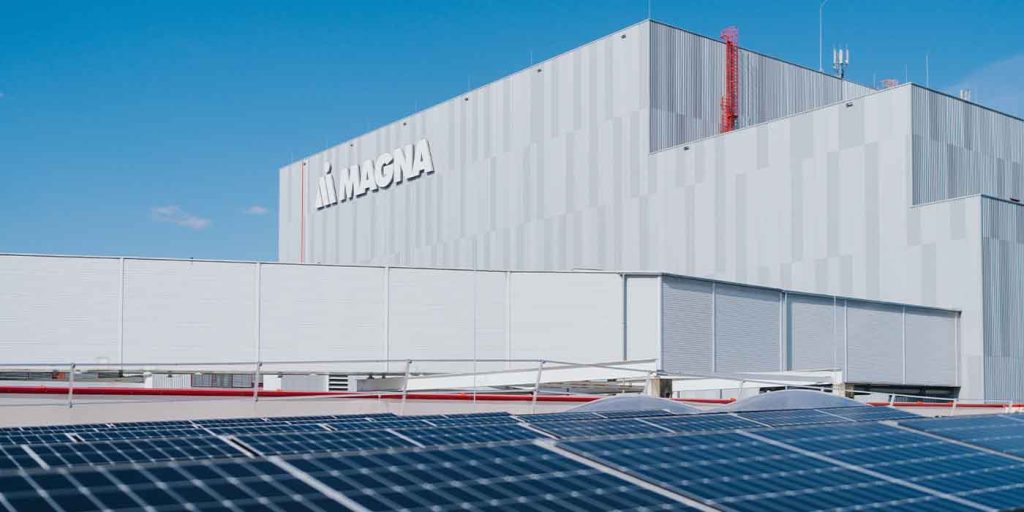
Alongside targets outlined in the Paris Climate Agreement, Magna International has submitted goals to be validated by the Science Based Targets initiative (SBTi) to reach net-zero carbon emissions by 2050. En route to that target, the global contract manufacturer had introduced several near-term sustainability goals.
Magna International is a global automotive contract manufacturer that currently reigns as the largest in North America and the fourth largest on the planet. It currently operates 351 production and assembly facilities across North America, Europe, Asia, South America, and Africa – and is only getting bigger.
In the last year alone, Magna has committed close to $1 billion toward the expansion of its North American operations, including $470 million in Canada, where it’s globally headquartered, in addition to another $500 million in Michigan, where its US headquarters sits.
The company also committed nearly $800 million to the state of Tennessee to build a new manufacturing plant in Ford’s BlueOval City. Such massive footprints of manufacturing around the world come with their fair share of carbon emissions, something Magna International has previously recognized and worked to offset.
Today, however, Magna has submitted a clear timeline for its journey to net-zero emissions.

Magna targets net-zero emissions worldwide
Magna International has submitted the following net-zero targets to the SBTi for validation: reach net-zero emissions worldwide by 2050, reduce about 42% of the company’s Scope 1 and Scope 2 emissions, and 35% of Scope 3 emissions by 2030. Per Magna CEO Swamy Kotagiri:
Magna has focused on creating a better world of mobility, and the company’s pursuit of net-zero emissions reflects this commitment. To reach this ambitious target, we are addressing not only the emissions we produce within our own facilities but also those of our entire supply chain, while supporting the industry move to low-carbon mobility technology. By embracing sustainable practices, shifting to renewable energy sources, making our manufacturing processes more efficient and partnering with our customers in the transition to electric vehicles, we want to make a positive impact on the planet and future generations.
In addition to setting net-zero goals, Magna has committed to having all its European operations running on 100% renewable electricity by 2025 and worldwide by 2030. Magna says it will require a lot of education and effort across its entire staff, Rolodex of partners, and customers to truly tackle climate change, but the company has contributed to discussions to help keep the conversation going, like the Suppliers Partnership for the Environment (SP), for example. SP is an open forum created to promote collaboration across the global automotive supply chain, including automakers, suppliers, the US EPA, and other governments. Per SP director Kellen Mahoney:
Collaboration is a key driving force that is propelling the automotive industry towards a sustainable future. Magna’s unwavering commitment and dedication to creating a greener planet is not only commendable but, as one of the world’s largest automotive suppliers, presents an opportunity for even greater collaboration to help shape a future where sustainable practices become the industry standard.
This year, Magna says it remains on track to achieve a previous commitment of reducing global energy intensity by 10% in all manufacturing facilities and is still aiming to further reduce that number to a 20% reduction by 2027. In the last two years alone, 30 Magna divisions have achieved carbon neutrality.
Author: Scooter Doll
Source: Electrek



